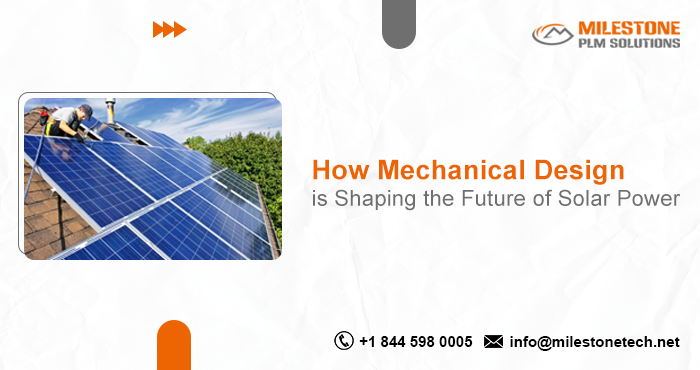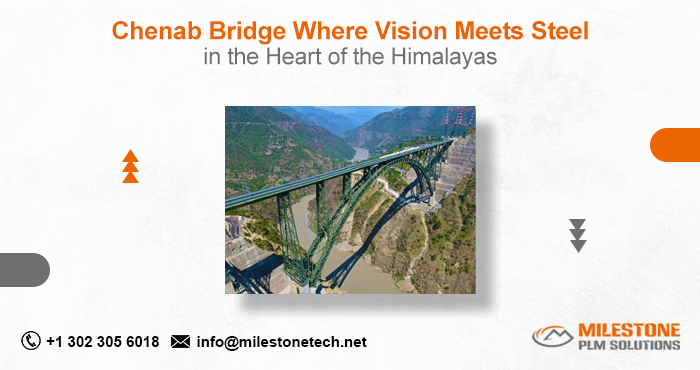How Mechanical Design is Shaping the Future of Solar Power
- Milestone PLM Solutions
- Oct 28, 2024
- 4 min read
As the world accelerates toward renewable energy to combat climate change, solar power has emerged as a central player in the green energy landscape. Solar technology advancements in recent years are making it possible to harness the sun's energy more efficiently, but there’s another essential factor at play: mechanical design. Through innovative mechanical design solutions, solar power systems are becoming more resilient, adaptable, and efficient, enabling this technology to meet the growing global demand for sustainable energy.

1. Transforming Solar Panel Mounting and Tracking Systems
A key aspect of mechanical design innovation in solar energy lies in panel mounting and tracking systems. How solar panels are mounted and positioned significantly affects energy capture and overall system efficiency.
Mounting Solutions: Traditional fixed mounts are often limited in their ability to capture sunlight throughout the day. Today’s mounting solutions, however, benefit from mechanical design improvements, enabling flexible and adjustable systems that adapt to different environmental conditions. These modern mounts are designed with lightweight, corrosion-resistant materials, allowing solar panels to withstand various climates and extreme weather events with less wear and tear.
Tracking Systems: Solar tracking systems, which adjust panel angles to follow the sun's path across the sky, are a prime example of mechanical design driving efficiency. Single-axis and dual-axis tracking systems can increase solar panel energy capture by 20–40% compared to stationary mounts. These systems rely on sophisticated mechanical components—like precise gears, durable frames, and efficient motors—that maintain smooth operation and minimize energy use. By optimizing sunlight exposure, tracking systems help boost the overall output and cost-effectiveness of solar installations.
2. Innovative Cooling Solutions for Maximum Efficiency
Solar panels tend to lose efficiency as they heat up, a challenge especially prevalent in regions with intense sunlight. Advanced mechanical design approaches are helping keep panels cool, ensuring they perform optimally even under high temperatures.
Passive Cooling Designs: To tackle the problem of overheating, passive cooling designs utilize natural airflow, heat sinks, and fins to dissipate excess heat without consuming additional energy. These cooling elements are often incorporated directly into the panel structure, optimizing cooling while keeping systems low-maintenance and energy-efficient.
Active Cooling Systems: For high-performance installations in particularly hot climates, active cooling systems offer a more direct approach. By using either air or water circulation to cool the panels, active cooling solutions ensure that temperatures remain within the optimal range for energy production. Mechanical design improvements in pumps, channels, and cooling systems have made active cooling more effective and less resource-intensive, prolonging panel life and improving energy yield.
3. Structural Design Adaptations for Solar Farms
The design of large-scale solar farms is another area where mechanical design is making a meaningful impact. These installations often span vast areas and face diverse environmental challenges, requiring robust and adaptable structural designs.
Floating Solar Farms: As land becomes a scarce resource in some regions, floating solar farms are emerging as a viable solution. In these installations, solar panels are mounted on floating platforms placed on water bodies like lakes and reservoirs. Mechanical engineers design these platforms to be buoyant, stable, and resistant to corrosion, ensuring that the panels remain effective even in fluctuating water conditions. Floating solar farms not only increase available installation space but also provide additional cooling for the panels, improving efficiency.
Bifacial Panels and Reflective Surfaces: Many solar farms are adopting bifacial solar panels, which can capture sunlight from both sides. To maximize their effectiveness, engineers have designed reflective surfaces beneath the panels to bounce sunlight onto the backside. This simple yet effective mechanical design innovation can significantly increase energy capture without expanding the physical footprint of the installation.
4. Material Advancements in Mechanical Design for Solar Power
Material selection plays a crucial role in the mechanical design of solar power systems, impacting durability, weight, and overall performance. Recent advances in materials science are enabling lighter, stronger, and more resilient solar components.
Lightweight Composites and Alloys: Mechanical engineers are increasingly using composite materials like fiber-reinforced polymers and lightweight alloys to build durable frames, mounts, and supports. These materials offer high strength-to-weight ratios and resistance to corrosion, making them ideal for use in remote and extreme environments where durability is critical.
Smart Materials: Smart materials, which change properties in response to environmental conditions, are also finding their way into solar installations. For example, certain materials that expand or contract with temperature fluctuations can be used in passive tracking systems, reducing mechanical complexity while improving system efficiency.
5. The Future of Solar Power: Integrating Mechanical Design with AI and IoT
Looking ahead, the future of solar power will see mechanical design integrating with artificial intelligence (AI) and the Internet of Things (IoT). AI-driven tracking systems and IoT-enabled sensors are allowing solar installations to self-optimize by adjusting panel angles, monitoring wear on components, and predicting maintenance needs.
Predictive Maintenance: Sensors that track the performance and condition of mechanical components can send alerts when maintenance is needed, preventing costly breakdowns and extending equipment life. This predictive approach, powered by mechanical design combined with IoT, minimizes downtime and maximizes energy production.
Smart Tracking Systems: AI-driven solar tracking systems can adjust panel angles based on real-time weather data and sunlight forecasts, ensuring optimal alignment throughout the day. Mechanical systems that support frequent angle adjustments are designed for durability, allowing solar installations to benefit from continuous optimization without extensive maintenance.
Conclusion: Mechanical Design Powers the Future of Solar Energy
As solar technology continues to evolve, mechanical design stands at the forefront of innovations that make solar power more efficient, durable, and adaptable. Through advancements in mounting and tracking systems, cooling solutions, structural adaptations, and materials, mechanical engineers are driving solar power to new levels of sustainability and scalability. The fusion of mechanical design with digital technologies like AI and IoT promises a future where solar power systems are not only smarter but also more resilient, paving the way toward a cleaner, greener tomorrow


